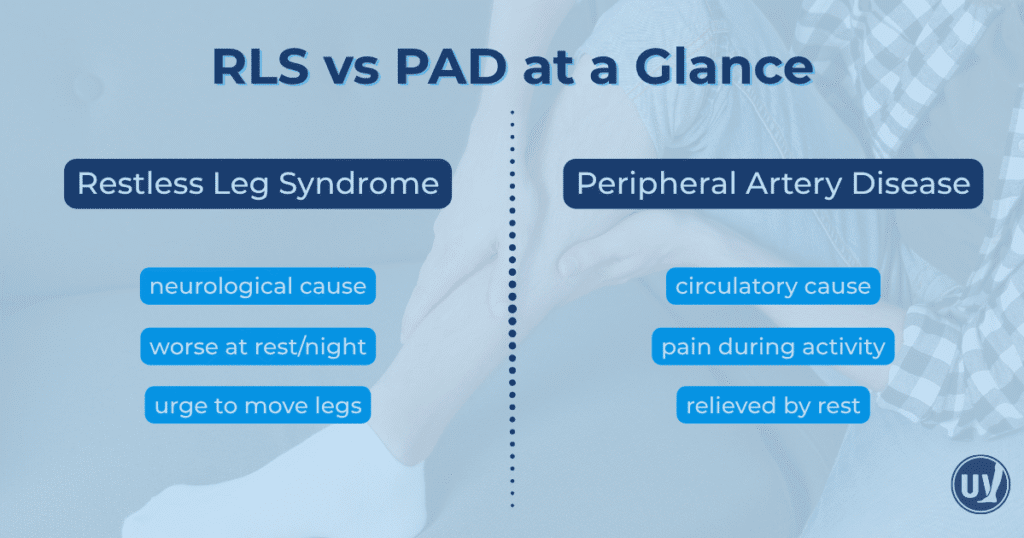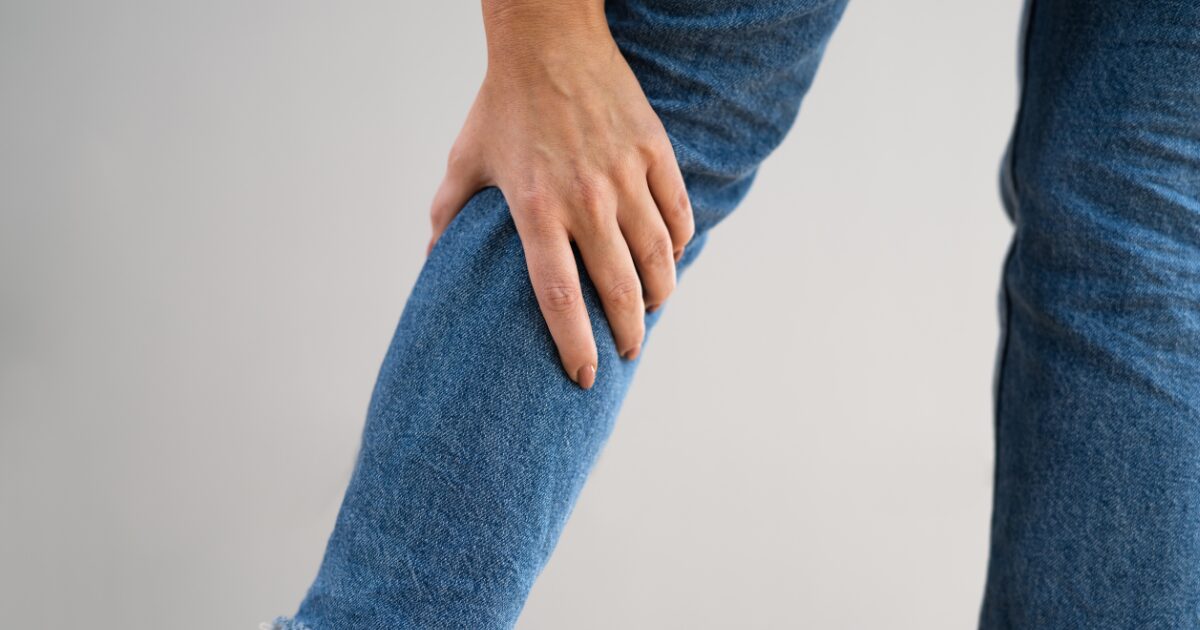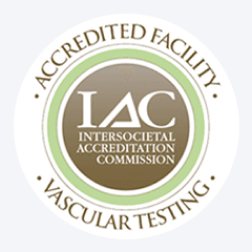Leg discomfort can take many forms, but not all leg issues are the same. Restless Legs Syndrome (RLS) and Peripheral Artery Disease (PAD) both affect the legs, yet they stem from very different causes and require distinct approaches to care.
RLS is a neurological condition that creates an uncontrollable urge to move the legs, often appearing during rest or at night. PAD is a circulatory problem caused by narrowed arteries, which can lead to leg pain or cramping during activity. Both conditions can interfere with daily life, mobility, and sleep, but knowing the difference is key to getting the right treatment.
This article breaks down the symptoms, causes, and treatment paths for RLS and PAD, helping you understand what’s happening in your legs and when to seek guidance from a vascular specialist.
What Is Restless Legs Syndrome (RLS)?
Restless Legs Syndrome is a neurological condition that causes an uncontrollable urge to move the legs, often accompanied by uncomfortable sensations.
The sensations are typically worse during periods of rest. Evening and nighttime are when symptoms tend to intensify, and this can disrupt sleep and cause significant discomfort.
The sensations caused by RLS can differ from person to person, but they’re often described as tingling, burning, itching, or even a crawling feeling deep within the legs.
People with RLS may find temporary relief by moving. Walking or stretching the legs can sometimes help, however, these relief measures are often short-lived.
Here are some common features of RLS:
- Worsening symptoms during inactivity
- Relief through movement
- Sensations that worsen at night
RLS affects sleep quality and daily life. It’s important to seek professional advice for proper management. Treatment can involve lifestyle changes and medications, improving comfort and well-being.
What Is Peripheral Artery Disease (PAD)?
Peripheral Artery Disease affects blood flow to the limbs. It occurs when arteries narrow due to plaque buildup. Reduced blood flow can lead to pain, especially in the legs.
This condition is mainly noticed during physical activities. Exercising or walking may cause cramping or discomfort. Pain often eases with rest, providing temporary relief.
PAD is more common in older adults. It can also be linked to other health conditions like diabetes or high cholesterol. Lifestyle factors play a significant role in its development.
Some common signs of PAD include:
- Leg pain or cramping during exercise
- Leg numbness or weakness
- Coldness in the lower leg or foot
Understanding PAD is crucial to managing symptoms. It also helps prevent complications like heart attacks or strokes. Early diagnosis and intervention can significantly improve outcomes.
Key Differences: RLS vs PAD
RLS and PAD can sometimes confuse patients due to similar symptoms. However, they are distinct conditions. Understanding their differences is essential for proper diagnosis and treatment.
RLS is a neurological disorder. It causes an uncontrollable urge to move the legs, primarily during rest. These sensations are often more pronounced at night or during periods of inactivity.
In contrast, PAD is a circulatory issue. It results in decreased blood flow to the legs, typically causing pain during physical activity. The discomfort usually subsides with rest, unlike RLS, which may worsen.
A key factor distinguishing these conditions is their symptoms’ triggers and relief patterns. While RLS mainly affects the nervous system, PAD is rooted in blood flow issues. Each has unique implications for management and treatment.
Identifying these differences helps in achieving accurate diagnosis. It also guides personalized treatment plans, ensuring better care for patients.
Common Symptoms: How to Recognize Each Condition
Each condition presents a unique set of symptoms that can help differentiate them.
RLS is characterized by an overwhelming urge to move the legs, often accompanied by uncomfortable sensations. These symptoms typically worsen in the evening or during periods of rest, making sleep challenging.
On the other hand, PAD primarily causes pain or cramping in the legs, which appears during physical activities like walking. This discomfort generally eases when you rest.

To assist in identifying these conditions, here is a summary of symptoms:
- RLS Symptoms:
- Strong urge to move legs
- Tingling or itching sensations
- Discomfort worsening at night
- PAD Symptoms:
- Leg pain during activity
- Cramping
- Symptoms subside with rest
Each set of symptoms has distinct characteristics. Being aware of these can help guide you towards appropriate medical advice. If experiencing any of these symptoms, consult a healthcare professional to explore suitable treatment options. Early recognition and intervention are key to effective management of both conditions.
Risk Factors and Who Is at Risk?
Understanding the risk factors associated with Restless Legs Syndrome and Peripheral Artery Disease is vital for prevention and management. These factors can vary significantly between the two conditions.
For RLS, certain aspects increase susceptibility. Women are more prone, and a family history of RLS can also play a role. RLS is sometimes linked to iron deficiency or other medical conditions such as kidney disease.
PAD primarily affects older adults and is associated with lifestyle choices and health conditions. Key risk factors for PAD include smoking, diabetes, high blood pressure, and high cholesterol levels. These can lead to narrowed arteries.
Being aware of these risk factors empowers individuals to take proactive steps in managing their health. Consulting healthcare professionals can provide further insights and preventive measures tailored to individual risk profiles.
Diagnosis: How Are RLS and PAD Identified?
Identifying Restless Legs Syndrome and Peripheral Artery Disease involves different diagnostic approaches due to their distinct nature. Accurate diagnosis is crucial for effective treatment and management.
For RLS, diagnosis is primarily based on clinical evaluation. Healthcare providers will review symptoms and medical history to confirm RLS. No specific test exists, but iron levels may be checked, as deficiencies can contribute to symptoms.
On the other hand, diagnosing PAD typically involves various tests to assess blood flow and artery condition. Common tests include:
- Ankle-Brachial Index: Compares blood pressure in the ankle and arm.
- Ultrasound: Visualizes blood flow in the arteries.
- Angiography: Provides detailed images of blood vessels.
Treatment Options for RLS and PAD
Treatment options for RLS and PAD vary according to the underlying causes and symptom severity. Addressing these conditions effectively can improve quality of life significantly.
Both conditions require a personalized approach, as each patient may respond differently to treatment. Continuous monitoring and open communication with healthcare professionals ensure optimal care. Implementing these strategies not only addresses symptoms but also prevents progression, leading to better long-term health outcomes.
When to See a Doctor: Warning Signs and Next Steps
Recognizing when to seek medical attention for Restless Legs Syndrome or Peripheral Artery Disease is crucial. Delaying a doctor’s visit can lead to worsening symptoms and potential complications.
If you experience any of the following, consult a healthcare professional promptly:
- Persistent leg discomfort or urge to move, particularly at night
- Pain or cramping in legs during physical activities
- Changes in skin color or temperature in your legs
Improving Quality of Life: Living with RLS or PAD
Living with Restless Legs Syndrome or Peripheral Artery Disease requires ongoing management and lifestyle adjustments. Both conditions can impact daily activities, but effective strategies can improve your quality of life. By understanding your condition, you can take proactive steps to alleviate symptoms.
Incorporating these changes can make a significant difference:
- Establish a regular exercise routine.
- Maintain a healthy, balanced diet.
- Practice good sleep hygiene.
Support from healthcare providers, family, and friends is essential in managing these conditions. Engage with support groups or forums to connect with others facing similar challenges. Remember, staying informed and actively participating in your care plan empowers you to live a full and satisfying life despite these conditions.
Empowering Patients to Take Control
Recognizing the differences between Restless Legs Syndrome and Peripheral Artery Disease is an important step toward better leg health. Understanding your symptoms and seeking the right care can improve comfort, mobility, and overall well-being.
Partnering with vascular specialists allows you to develop a personalized treatment plan, monitor your progress, and address changes early. Open communication and regular check-ins are essential for managing symptoms effectively.
You have the power to take control of your healthcare journey. For expert guidance and tailored care, schedule a consultation with United Vein & Vascular Centers and take the next step toward healthier legs.
Frequently Asked Questions
RLS typically causes an uncontrollable urge to move the legs, especially at night or during rest, while PAD often leads to pain, cramping, or fatigue during physical activity.
PAD may require lifestyle changes, medication, or vascular procedures, while RLS is often managed with medication, lifestyle adjustments, and sleep hygiene strategies. A vascular specialist can recommend the best approach.
Persistent leg pain, cramping, or nighttime restlessness warrants evaluation. Early consultation helps determine the cause and ensures proper treatment.


